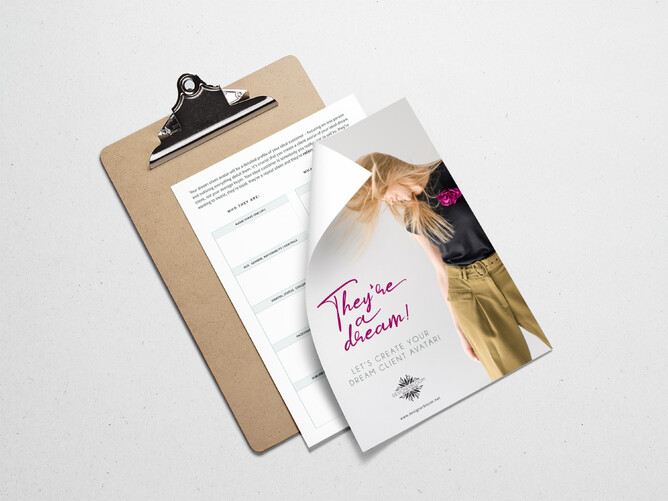A huge part of the Logo and Branding process requires a strong understanding of your target market. This blog aims to help you figure out who your target market is.
What is a dream client avatar?
Your dream client avatar will be a detailed profile of your ideal customer – focusing on one person and outlining everything about them. It’s crucial that you create a client avatar of your ideal dream client, not your average buyer. Your ideal customer is somebody you really want to sell to, they’re wanting to invest, they’re loyal, they’re a repeat client and they’re referral angels!
Hopefully you’ll already have at least 1 client like this, if this is the case, use this person to build the foundations of your avatar. If not, it’s a sign that you’ve not been targeting the right people.
Do YOU need a customer avatar?
Yes! You need to ensure that the most is made from your look (your branding), the wording you use, your time on social media, and your marketing budget. A customer avatar allows you to do all of these things, instantly targeting your dream client.
If you’ve previously spent time, effort and money without making a decent return of investment you will greatly benefit from a detailed customer avatar.
WHY do you need an avatar?
- If you try to appeal to everyone, you’ll end up appealing to nobody.
- If you try to speak everyone’s language, you’ll connect with nobody.
With an Avatar you will resonate instantly with your ideal customer. By creating a product or service that is specifically aimed at one person it makes the process more personalised, targeted and relevant.
- You’ll uncover the true pain points of your dream client, creating content that solves and appeals to their needs.
- You’ll create the perfect experience for them, beginning with their first interaction, website visit and purchase.
A perfect user experience guarantees repeat custom and referrals.
HOW do you create a dream client avatar?
The more you know about your ideal customer, the better you’ll be able to target them.
Give them a name. Decide their age, gender, marital status. Where do they live? What’s their home like? What’s their occupation and job title? Do they have a child or children, what age are they?
It’s crucial that you’re specific from start to finish. For example, when entering ‘age’ do not write 30-40. Being broad is exactly what you’re trying to avoid! Get to know this ‘avatar’ as if they are a real person.
It might help to find a photo of somebody online who represents your ideal customer.
As you enter the information, make sure you never veer from your customer avatar’s mindset. It’s very easy to slip into your own, or that of your average buyer.
What about multiple avatars?
Having multiple avatars is ok too. Most businesses will have more than one ideal customer, especially if they offer more than one product or service.
The best way to define your customer avatars is to tackle them one at a time. Try starting with the market that brings the most profit to your business. Through this process, you may discover that your business is too broad, and that you need to tighten up your product or service offering in order to really develop your niche and position yourself to deliver your best to that market.
Negative avatars
A negative avatar is a generalised representation of the persona that you don't want as a customer or client. Having an understanding of who you don't want to serve can sometimes make it easier to know who you do want to serve.
Think of that one customer who was a total nightmare to work with! Note all of the things that made the relationship difficult. Don’t focus on personal characteristics of why the individual was not easy to work with, but rather on the reasons why they weren't a good fit for your product or service – eg, a low budget, not understanding your processes, not willing to learn from you or take direction.
Now, let’s create your dream client avatar!
Download my printable worksheet! Questions and pointers outlined in the document include:
Who they are:
- Name (make one up!)
- Age
- Gender
- Nationality/heritage
- Marital status
- Children?
- Profession
- Income
- Suburb/state of residence
What’s their dream?
- Likes/hobbies/interests
- Values
- What do they read?
- What do they watch on TV?
- Which social media channels do they most frequently interact with?
What makes them tick?
- What is their daily schedule (when do they work, when do they relax?)
- How do they spend their free time (meals out with family and/or friends / quiet time / meditation?)
- How do they see themselves?
- What is their internal self talk?
- What do they worry about?
Their experience with you:
- How did they find you or hear about you?
- What were they looking for?
- What were they hoping to solve or accomplish?
- What were they thinking before they bought your product/service?
- How were they feeling and why were they feeling that way?
- How did they feel once they purchased your product or service?












